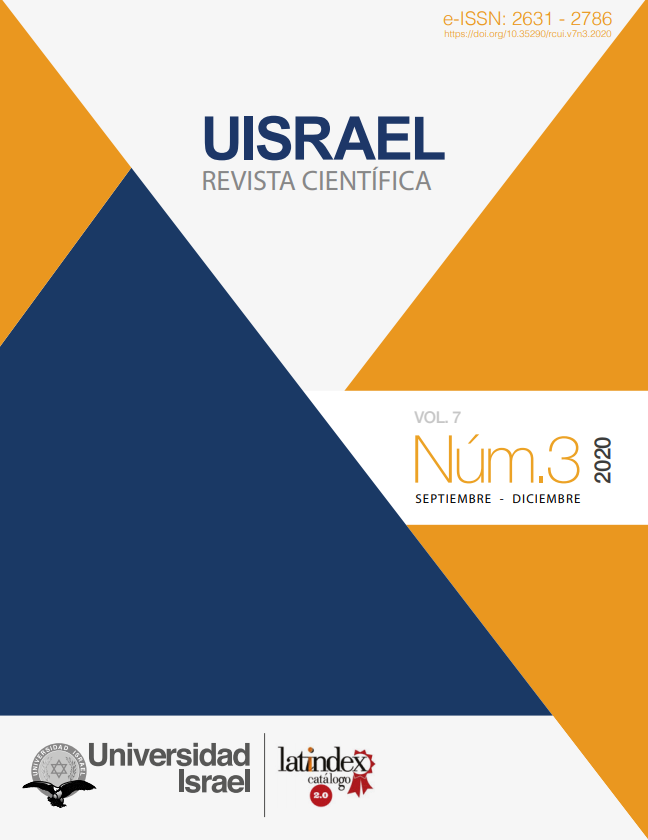The teaching of Spanish as a mother tongue. Theoretical-methodological assumptions
DOI:
https://doi.org/10.35290/rcui.v7n3.2020.315Keywords:
mother tongue, teaching - learning, spanish, students, teachersAbstract
The most recent studies of the teaching of spanish as a mother tongue have moved towards various communicative situations, where the speaker demonstrates his linguistic capacities and his particula-rities as a social entity, which acts -and therefore speaks- depending on the communicative situation. the one that is exposed. It is undeniable that the ideal space for the correct learning of the language is the school, since the student not only perfects the command of the oral language that he learned from his parents, in a certain sociocultural environment; rather, it appropriates the codes of the wri-tten language and the norms that govern its use. This article aims to analyze the current situation of teaching spanish as a mother tongue; for this, it is explained the theoretical and methodological foundations that support this process and some didactic instruments that will contribute to its impro-vement. The teaching of the language must be seen as an integrating process, which covers from the relationship between the signifier and the signified to its variation in different contexts, so that the teaching - learning of Spanish as a mother tongue is fruitful, and achieves that bilateral character that You must have a language class of excellence.
Downloads
References
Addine, F., Recarey, S., Fuxá, M., & Fernández, S. (2004). Didáctica: teoría y práctica. La Habana: Editorial Pueblo y Educación, 51.
Alfaro, L. (2018). El español actual y sus problemas: Cuestiones de didáctica de la lengua. [diapositiva de Power Point]. UCLV. Villa Clara, Cuba.
Bruzual, R. (2007). Fundamentos teóricos y metodológicos para la enseñanza de la lengua materna (L1) y segundas lenguas (L2) en contextos bilingües. Argos, 24(46), 46-65.
Cassany, D., Luna, M., & Sanz, G. (1994). Enseñar lengua. Barcelona: Graó.
Giammatteo, M. (diciembre, 2013). ¿Por qué y para qué enseñar gramática? La gramática en la formación de habilidades cognitivo lingüísticas. SIGNOS ELE, 7, URL http://p3.usal.edu.ar/index.php/ele/article/view/2003, 16 pp.
Hernández, R., Fernández, C., & Baptista, M. (2014). Metodología de la investigación. Iztapalapa. México D.F., México: Mc Graw Hill
Lomas, C. (1999). Cómo enseñar a hacer cosas con las palabras: teoría y práctica de la educación lingüística. Barcelona: Paidós.
Ministerio de Educación, Cultura y Deporte (1997). Currículo Básico Nacional. Caracas, Venezuela: UCEP
Parra, M. (1989). Español comunicativo. Universidad nacional de Colombia. Colombia: Editorial Norma S.A
Roméu Escobar, A. (1992). Aplicación del enfoque comunicativo: comprensión, análisis y construcción de textos. Ciudad Habana: IPLAC.
Roméu, A. (2003). Acerca de la enseñanza del Español y la Literatura. Pueblo y Educación, 20-24.
Roméu, A. (2007). El enfoque cognitivo, comunicativo y sociocultural en la enseñanza de la lengua y la literatura. La Habana: Editorial Pueblo y Educación, 112-29.
Roméu, A. (2013). Didáctica de la lengua española y la literatura. La Habana: Editorial Pueblo y Educación.
Saussure, F. (1975). Curso de Lingüística general. Madrid, España: Losada
Published
How to Cite
Issue
Section
License
Copyright (c) 2020 Armando Castillo Acevedo y Heriberto Nuñez Rodríguez

This work is licensed under a Creative Commons Attribution-ShareAlike 4.0 International License.
Los autores que participen de los procesos de evaluación y publicación de sus ediciones conservan los derechos de autor y ceden a la revista el derecho a la primera publicación, tal como establecen las condiciones de reconocimiento en la licencia Creative Commons Reconocimiento 4.0 Internacional (CC BY), donde los autores autorizan el libre acceso a sus obras, permitiendo que los lectores copien, distribuyan y transmitan por diversos medios, garantizando una amplia difusión del conocimiento científico publicado.
- Toda derivación, a partir de esta obra, deberá citar la fuente y a la primera publicación en esta revista. Se permiten derechos comerciales no lucrativos sobre sus contenidos.
- Los autores pueden realizar otros acuerdos contractuales independientes y adicionales para la distribución no exclusiva de la versión del artículo publicado en esta revista, es decir, podrán incluirlo en un repositorio institucional o publicarlo en un libro, siempre que indiquen claramente que el trabajo se publicó por primera vez en esta revista.
- Se permite y recomienda a los autores compartir su trabajo en línea, con la finalidad de intercambios productivos para una mayor y más rápida citación del trabajo como lo establece los efectos del movimiento ‘Acceso Abierto’.
- No puede aplicar términos legales o medidas tecnológicas que restrinjan legalmente a otros de hacer cualquier cosa que permita la licencia: https://creativecommons.org/licenses/by/4.0/deed.es
- La Revista Científica es financiada completamente de los aportes realizados por nuestra entidad editora: Universidad Tecnológica Israel; por tal motivo, no establece cargos o cobros de ninguna índole a sus autores y colaboradores, así como tampoco genera pagos o remuneraciones de ningún tipo a ellos.
- Se asignará un Digital Object Identifier (DOI) a cada publicación.







